Save over $100K. BOWMAN-OYSTER ANTARCTIC / ARCTIC CAPABLE EXPEDITION YACHT
1979 Holman and Pye BOWMAN -OYSTER 57 Designed by World Famous Yacht Designer Kim Holman
| Make: | Holman and Pye BOWMAN -OYSTER 57 |
| Model: | Designed by World Famous Yacht Designer Kim Holman |
| Type: | Built at Same Yard that Constructed Oyster Yachts |
| Year: | 1979 |
| Location: | West Palm Beach, Florida, United States |
| Want to buy? | Contact seller! |
Description
Selling for Aprox. 1/3 of Fair Market Value.For More Info. or to Discuss Owner Financing Options: Will 970 319-4361(I live in the mountains where phone signals are spotty and I'm a sailor, often on the ocean where phone signals are also spotty, so make sure to leave a VoiceMail message if I don't answer. I'll call you back as quickly as I can.)I'LL GIVE YOU $500 IF YOU CAN BEAT A HOLE THROUGH THE TOPSIDES WITH A LARGE SLEDGE HAMMER IN LESS THAN 10 MINUTES OF POUNDING. Just Kidding, but I bet I would keep my money. I had to drill a 2" hole above the water-line for a new scupper drain and it used up two batteries on my 18 volt Ryobi Drill and the hole had to be drilled from both sides because a circular doorknob drill wasn't deep enough to get through the topsides without going at it from inside and outside. The hull of this vessel is about three times as thick as a Pacific Seacraft or Tayana of the same size which are considered some of the strongest Blue Water vessels in the world.
Partial Equipment List and Investments made from recent Exterior Re-fit:
Large Scale High Latitude Furling Genoa $10,000
Nearly new 115 HP Yanmar Diesel (only 173 Hrs) $15,000
Hydraulic In-Mast Furling Main Sail (needs 90 degree gear installed at base)
Cutter StaySail on Instant-Clip Stay
In-Mast Furling Mizzen
Count Them (Sixteen) Huge Self Tailing Winches - Recently Professionally Rebuilt (Two Main Winches are Hydraulic) Total Estimated Used value of Winches = $18,000)
Newly Installed $35,000 Stainless Standing Rigging
Newly Installed $8,000 Running Rigging
Seven Coat Awlgrip Professional Paint Job Below and Above Waterline $25K
Non-Skid and Awlgrip Deck Paint all New in 2015 $15K
Hydraulic Bow Thruster $9,500
Hydraulic Windlass4 Heavy Duty Cruising Anchors - Three Heavy 3/8 inch anchor chains Aprox 70' Each
Vessel Needs Interior Designed and Installed. Estimated Professional Cost $20K to $40K or build the cabinets, counters and settees yourself for the cost of some sheets of MDO plywood and teak trim and a lot of measuring and precise cutting. I can show you several amazing books all about boat interior construction.
If you can build kitchen cabinets in a land home you can built a boat interior. Its the same work. Also needs lines run from the fuel and water tanks and electrical reinstalled and hydraulic lines run (this equipment is all available at farm supply stores for reasonable prices and nearly any farmer who owns a backhoe or John Deere tractor can show you all the skills you need to set all that up just like a grade-school erector set.
Here is some info published on the web about the previous life of this amazing boat.
And Below that an article from Cruising World magazine about the sistership "Cloud Nine" that was the first American vessel to do the Northwest Passage in a single season, a record that remarkably took several attempts and was not successfully achieved until 2007, which gives you an idea how tough the conditions are which this type of boat was built to survive.
And below that an article about the vessel's designer Kim Holman of Holman and Pye, who designed all the early Oyster Line of Luxury Yachts, competetor of Nautor's Swans and the most expensive production Yachts in the World--Built by the same builders that built this yacht, at the same yacht yard, using the same techniques, the same materials and components.
Except that Bowmans were solid Fiberglass for Arctic and Antarctic Expedition Work (Expected collisions with sheet ice and small ice-bergs etc -- and the Oysters were a light weight foam encapsulated sandwich made for tropical latitudes--technology pioneered with the solid foam FRP encapsulated sandwich rigid stringers in the Bowmans that prevent the boat from having any structural hull wood to ever rot and give them a strength that can only be described by saying that they are the strongest fiberglass sailboat hulls that have ever been produced on Planet Earth.
Only 13 were built and that was in the late 1970s at the height of the "classic plastic era" so they are now quite sought after and hard to find vessel. Probably about 4000% (four thousand percent) stronger than the average 2018 production luxury yacht. These are hulls that will literally save your life!!
Owner Financing is Available with terms of 10% Down and 6% APR over 5 years. I am the current owner of the boat. Call me for more info about Owner Financing or about your Cruising Plans or anything else related to the possible purchase of this yacht.
William 970 319-4361
Aleria's Adventures
Blue water cruising
About us and our boat About Daria & AlexDaria and Alex Blackwell are lifelong sailors and passionate cruisers. They have completed three Atlantic crossings and spent years cruising the coasts of the Americas and Europe, as well as the Bahamas, the Caribbean islands, and the Atlantic islands, most recently double-handing on their vintage Bowman 57 ketch, Aleria. Daria holds a USCG Captain’s license. Alex holds a USCG Master’s license with sailing and towing endorsements. Daria and Alex are members of OCC and ICC. Both are also members of SSCA, Mayo Sailing Club and American Yacht Club. They are also the OCC and TransOcean Port Officers for the West of Ireland and the SSCA cruising station for Ireland. Daria is a member of the OCC Committee as well as their first PR Officer and Digital Communications Chairman.
The Blackwells are co-authors of Happy Hooking: The Art of Anchoring and Cruising the Wild Atlantic Way (of Ireland), both ofwhich have received excellent reviews in the sailing press. Their seminar on anchoring has drawn large crowds and delivered positive attendee feedback (Reference: SailAmerica). They also conduct webinars online on behalf of SSCA’s Seven Seas University and Great Lakes Cruising Club on topics that include anchoring, crossing the Atlantic, and cruising the Caribbean and Ireland, and created an online anchoring course for NauticEd.
Daria and Alex are frequent authors about their sailing adventures, contributing to Yachting World,Cruising Outpost,Cruising World, Classic Boat, Practical Boat Owner, Latitudes & Attitudes Seafaring, Ireland Afloat, Offshore, Windcheck, Points East,Soundings,Flying Fishand elsewhere. For many years, they served as the webmasters for American Yacht Club and launched the popular www.CoastalBoating.net, “the boaters’ resource for places to go and things to knowâ€. As founders of Sail4Kids Make a Memory Cruise, the Blackwells were recognized with prestigious awards by the Maria Fareri Children’s Hospital, American Yacht Club and the International Society for Perpetuation of Cruelty to Racing Yachtsmen.
Alex was a partner in Stardesign, a marketing support services firm in the US. Alex’s first book, Oyster Delight by Jonathan Mite, is a tribute to his lifelong interest in oysters, having launched an oyster hatchery in Ireland after being awarded a Master’s degree in Fisheries Biology from Kiel University. Alex is now working on his third novel, an action packed thriller and the third in ther Butterfly Effect series. Together they have also published Tales of Onyx, the Cruising Kitty in 2016. Daria is working on the final edit of her first novel, The Naked Truth, and a historical memoir called The Unwilling Immigrant.
Alex is fluent in German and Daria speaks fluent Ukrainian. Alex grew up in Ireland, while Daria hails from the east coast of the US. They set sail in 2008 for a yearlong sabbatical while moving to Ireland. Many thousands of miles later they are perpetually preparing for their next big adventure. When they are not sailing, they live in Westport, County Mayo with five kittens that adopted them one cold winter. Sadly, their cruising kitty, Onyx, perished with cancer after crossing the Atlantic three times. We like to think she had a good life.
About Aleria
Aleria is a Bowman 57 designed by Holman & Pye, the legendary British yacht design team that went on to design Oysters. You can see her lines in the lines of the first Oysters. Her hull was laid in 1975 and she was finished in 1976, commissioned as Manic Moment by the child prodigy pianist, Andre Watts. We have little information about his time with her. Next she was acquired by a couple who wanted to run charters in the Caribbean. They re-outfitted her, renamed her Kestrel and sailed her to the Caribbean, where we were told, the woman swore never to sail again. She was sold to a young couple who had met while working on tall ships in Maine. They took her, now named Papagayo, on a circumnavigation during which they had two children. They returned to integrate the kids into school on the Chesapeake Bay, where we acquired her and named her, Aleria. The name derives from Alex and Daria and means eaglet in Latin, which we thought was appropriate given her graceful flight with many wings. Our white seahorse personal signal is derived from the personal signal of the 16th C Irish pirate queen, Granuaille, a direct ancestor of Alex's step father. Does that make us pirates? Aarrrrrggghh!
You can learn more about the Bowman 57 on our Facebookgroup and page.
| Aleria flying her whites seahorse spinnaker |
Email ThisBlogThis!Share to TwitterShare to FacebookShare to Pinterest 1 comment: chris oneilTuesday, 07 November, 2017
Hello,I stumbled across this.it makes me smile reading about your story.my name is Chris oneil,my Father name is rob oneil.
He was the official "harbour master" of hubbards Nova Scotia.I laughed out loud when he told me that he had tried to persuade you to take a mooring in the cove,not knowing you wrote the book on anchoring!!!!!! Dad passed away as a result of a stroke nearly two years ago.Your story makes me laugh every time I think of him treating people as if they did not know what the were doing!!!fair winds and safe anchorages,Chris oneil
Slender, elegant, and spirited, the Bowman 57 is a standard with refined styling.
By Daria Blackwell May 4, 2007
My husband, Alex, and I intended to be cruising the world for some time, with no particular plan tocircumnavigate, and we had a pretty reasonable set of criteria for the vessel that would help us get there. The boat had to be sturdy, capable of handling heavy seas and possible collisions with floating objects, and manageable for each of us alone. It had to be comfortable under way and at anchor, and it had to be pretty. We expected to sail doublehanded for the most part, so we wanted a split rig.
At the end of a long search, the boat that sang to us was a Bowman 57 ketch, which was designed by Holman & Pye, who later designed many Oysters, and built in 1976 by Bowman Yachts, located in Southampton, England. We named her Aleria.
She's a "boat-shaped boat" with beautiful lines, a delicate transom, and a wave-splitting bow. Drawing more than 8 feet, she's not about to go gunkholing, but she'll certainly handle a sea well. Her skeg-hung rudder is protected behind a substantial fin keel onto which the mast is stepped. The hull is solid fiberglass-no balsa core to rot, no foam core to get soggy or crack. If she hits something solid, she's likely to bounce.
With a beam of less than 15 feet, the Bowman 57 is svelte by current standards, and the design's slenderness makes a difference belowdecks. It's possible to traverse her length with handholds all the way.
As was usual with boats of this size and vintage, Bowman 57s were customized for individual owners. Aleria, formerly Grand Dame, had been originally commissioned by the pianist Andre Watts. The galley has custom-designed tile work, Corian countertops, double stainless-steel full-size sinks, a three-burner stove, cabinets galore, and double refrigeration compartments. In this long galley, on the starboard side under the cockpit, bracing yourself is easy: Cabinetry and bulkheads bind its entire length.
The navigation station, to port at the foot of the companionway, has a nicely sized chart table. Adjacent to it is an office, with full-size drawers for paper charts, a desk for a computer, an office chair, cabinets, and more.
The aft cabin has a single berth to starboard and a double to port with cushions between, both good sea berths. It doesn't have enough storage space, but it could be easily modified. An adjoining head has a shower, a full-size toilet, and a porcelain sink.
The well-ventilated saloon seats six around the table using only the U-shaped settee, eight with chairs added at the end, and three more on the port settee. Forward are two cabins with two bunk berths each and another head and shower. In the forepeak is a workshop complete with workbench, vise, and cabinets.
Ketch rigged and with double headsails, the 57 can take on sail in small enough doses for each of us to be able to handle them. Aleria behaves like the big boat she is, responding more slowly to the helm than what we were used to. My first turn at the wheel was intimidating, but I took comfort in the feeling from the center cockpit that following seas were a long way "back there." Once under way, balanced and in the groove, she sails like a freight train.
Only a handful of Bowman 57s were built. All have differences in layout; prices range from $250,000 to $350,000.
Bowman 57 SpecsLOA: 57' 0" (17.37 m.)
LWL: 44' 7" (13.59 m.)
Beam: 14' 8" (4.47 m.)
Draft: 8' 4" (2.54 m.)
Sail Area (100%): 1,162 sq. ft. (107.9 sq. m.)
Ballast:16,000 lb. (7,258 kg.)
Displacement: 42,000 lb. (19,051 kg.)
Ballast/D: .38
D/L: 212
SA/D: 15.4
Water: 350 gal. (1,327 l.)
Fuel: 200 gal. (758 l.)
Engine: Various
Designer: Holman & Pye
After three decades of round-the-world voyaging, former shipmates of a globe-girdling Bowman 57 gather at a Minnesota reunion.
By Roger Swanson November 28, 2011
Cloud Nine's Odyssey Revisited Image
From the coast of Greenland (pictured here) and the Northwest Passage to the frozen continent of Antarctica, Cloud Nine was at home in the high latitudes and most everywhere in between. The world map (above) depicts routes and highlights.
David Thoreson
Last winter, on a very cold and snowy Minnesota day, I was reflecting back on some of the sailing passages I’d made during the past 30 years aboard Cloud Nine, my 57-foot Bowman ketch. Most of my 217,000 nautical miles—including three circumnavigations, two trips to Antarctica, and three Northwest Passage attempts—had been aboard this boat. Perhaps coincidentally, my wife, Gaynelle, asked me at that same time about how I’d like to celebrate my 80th birthday. “What I’d really like to do,†I replied, “is gather as many as possible of the 310 former crewmembers who have sailed aboard Cloud Nine for a party to celebrate our shared sailing experiences.â€
Last June, on our farm in southwestern Minesota the dream came true.
We couldn’t find them all, and we sadly learned that 22 of our shipmates had made their final passages, but 169 former crewmembers (with spouses and a few children), including 122 that had actually made bluewater passages with me aboard Cloud Nine or previous vessels, arrived from all over the United States, Canada, and England to attend our weekend pig roast among the Minnesota cornfields. The gathering was informal, and guests spent idle time browsing through my collection of artifacts from distant cruising destinations, including an eight-foot-long “spirit house†carving from Vanuatu’s Ambrym island, a set of masks from New Guinea’s Sepik River, and a lion spear from Kenya. The walls of both our bathrooms are also papered with previously used charts, and over 400 framed photos are hung on the corresponding places on the charts where the pictures were taken.
Because crew changes often took place in remote spots to accommodate work and vacation schedules, I hadn’t seen many of these faces for many years, not since leaving them on a distant dock in Mozambique or Papua New Guinea or maybe even Dutch Harbor, Alaska. But they came to our reunion. Many in our group had never met, but one former shipmate, Cynthia Bowell, noted, “The beauty of this event was that no matter who you were sitting next to, you had so much in common, and the stories were so easy to share. Everyone had unique experiences in places that most people can only dream about.â€
“As soon as we started talking details,†added Rona House, an English mathematician who went on to circumnavigate on her own 27-footer, Cacique, “the years dropped away like magic.â€
Many of our crews included individuals who’d never previously been to sea. Several said that their open-ocean passages had been life-changing experiences. All our major passages were represented by many of the sailors who’d been aboard, and Saturday’s high-spirited roasting of the captain offered plenty of opportunities for them to tell the other side of the story.
If you google for the above article on the web you can find it with all the original photos and the map of Cloud Nine's global voyages.
The life and designs of Kim Holman
By
Steffan Meyric-Hughes
An in-depth look at the life and work of the post-war British yacht designer CR ‘Kim’ Holman, who drew the Twister, Stella and moreArticle reproduced in full from CB235 (January 2008).
On 8 May 1945 the Second World War ended for Britain. “It’s over in the West!†screamed the newspaper headlines. It was also over for the Royal Navy’s youngest officer ever to captain a minesweeper, a 20-year-old Cornishman, Christopher Rushmore Holman. Despite the accolade of his early naval promotion, he reportedly told his boatbuilder friend Garth Brooks later in life that he never raised a single mine, adding, “For all I know, they’re still there.â€
In the modesty of that statement there lies a small clue as to why so little is known about this important East Coast yacht designer whose short career included the Stella and the Twister, and whose 70 built designs spawned the building of more than 700 yachts, many of them dominant in offshore racing on the East Coast and some of which have travelled much further.
It had been a good war for Holman and a war that would prove pivotal to his story as a yacht designer. Through sail-training in 32ft (9.8m) cutters while stationed at HMS Ganges at Shotley on the River Stour and later searching the Thames estuary for mines, Holman learned to love the East Coast and it was to those big skies, cold grey sea and mudflats that he would return.
After demobilisation in 1946 Kim went to crammer school to finish his education, then to Bristol University to read naval architecture. It was a natural choice, not just as a result of his time on minesweepers but because of his childhood spent sailing the Fal and Helford rivers with brothers Jack and Richard in Cornwall, near to the home in Carbis Bay where he was born on 28 January 1925. As his cousin Meryam Holman recounts, “It seemed those boys learned to sail before they could walk.†It was also an upbringing that provided everything upper-middle-class life had to offer in the interwar years – including the pressure to succeed and to socialise in the right circles. Holman’s father was a wealthy man, owner of an engineering firm called International Compressed Air, and his mother was an academic. At school at Sherborne, Kim was a keen sportsman and, as it happened, ‘boazer’ to a ‘fag’ called Dick Shephard who would later become Bishop of Liverpool.
Holman left Bristol without a degree, but he did, like so many of his peers, learn to “drink and have funâ€. History does not record any of his tutor’s comments, but traits of Holman’s character noted by many who knew him were his instinctiveness and spontaneity. Throughout his life he was a creature more of talent than application and not one to hold with anything that didn’t interest him. In 1950, partly to escape the pressures of family life, Kim packed his bags for Woodbridge, Suffolk, where he would spend the next few years apprenticed to the yacht designer Jack Francis-Jones – he of the Kestrel. While there, he honed his skills as a helm on his Merlin Rocket Pink Gin and with Mike Spears aboard Brambling, which won many East Coast Blue Riband races.
In 1954 Holman left Suffolk for an extended transatlantic circuit and the next year moved to the place that history will most associate him with: West Mersea, a small tidal island off the marshes of Essex.
He had no intention of becoming a yacht designer, despite his training: with his family background Holman was a man of independent means. Then he met a sailmaker, Paddy Hare, who invited him to buy a share in his firm, Gowens Sailmakers, in 1955. The yacht designing, at least at the beginning, might have been described as a rather grand hobby, conducted in Gowens’ back room – but after the success of his first boat, Phialle, a design initially drawn just for himself, it became apparent that more would follow.
Phialle, like the later Stella and Twister, was designed in a rush – to win the Pattinson Cup at the 1956 Burnham Week Regatta, which she did by a large margin, going on to win the Harwich-to-Ostend Race later in the season.
Even at this early stage, Phialle, 26ft 10in (8.2m), embodied many of Holman’s ideals as a designer. She was pretty to behold and fast enough to be raced on the East Anglian offshore circuit, a series of summer weekend passage races in which Kim was a regular participant. With a 50 per cent ballast ratio she is also seaworthy, as he proved by taking her to the Baltic in 1957. Seven ‘Phialles’ (‘little vessel’ in Latin) were built (see p62 for the first Phialle’s restoration). In 1956 came design No 2, Wake, a 39ft (11.9m) yawl; two were built.
In these early designs, Kim had defined the two types of yacht that he would concentrate on for the rest of his career: a cruiser/racer sloop of 25-35ft (7.6-10.7m) in length, and a larger yawl or ketch of 35-50ft (10.7-15m) for blue-water cruising.
On his return from the Baltic he designed Rummer, a pretty ketch of 35ft, shoal-draught for the East Coast, comfortable and heavily-built – not a typical Holman type, but it proved popular: 10 were built.
After Rummer, the orders began to trickle in. Kim designed dinghies, day-sailers, another ketch, Landfall, of which seven were built, and Stirling, a boat for himself that was a little bigger than Phialle at 27ft 10in (8.5m). This was the first of his boats to be built by brother Jack, who’d stayed west in Brixham, Devon, and bought Uphams boatyard. Stirling was a success and over 20 were built. The ball was rolling now, but towards the end of the decade two events occurred, launching an extraordinarily prolific stage of Holman’s life that would last until the mid-1960s.
The first, in 1958, was meeting Kentish businessman and Crouch sailor, A E ‘Dickie’ Bird, a keen racing yachtsman with the means to indulge his hobby. Kim’s first boat for Bird was Claire de Lune (later Bluejacket). She was 39ft (11.9m), with a beam of 10ft (3m) and was built, at Dickie’s insistence, by Tucker Brown, starting a long relationship between client, designer and builder. Bird believed that Tucker Brown was the best yard for building boats to a light weight. He was to prove even more instrumental in Holman’s career the next year. Bird and Tucker Brown were looking for a bigger Folkboat: beamier, with greater initial stability, more interior space – and more speed. It had to be cheap, too, the idea being to rapidly establish an East Coast class.
Holman’s solution, a pretty 27ft (8.2m) clinker-hulled fractional sloop, was a run-away success. Despite launching just a day before Burnham Week, La Vie en Rose won all her seven races, sweeping the board so conclusively that competitors assumed the ratings office had made a mistake. There was no mistake though. In the next 13 years, 102 boats were built, and a number in Australia. The class was named – allegedly after a beermat – Stella.
Yachting had a new kid in town, a challenger to the likes of Charles Nicholson, Alan Buchanan and Robert Clarke. The name of CR Holman was made. The next few years would pass in a blur of designing and racing: in 1960 and 1961, Holman designed more than 20 yachts. But in his personal and professional life there were storm clouds on the horizon. One was called GRP; the other was an inner turmoil which would lead to a nervous breakdown.
For now though, as the swinging 60s gradually displaced the monochrome austerity of the 50s, Holman was at the most productive stage of his life. He was a member of West Mersea Yacht Club, and in 1960 bought a house on nearby Firs Chase in addition to his London flat in Hyde Park. The good times rolled.
That same year, Kim Holman met his second great patron: wealthy London stockbroker and close friend of the Queen Mother, Dick Wilkins. Wilkins was not a sailor; he was more what you might call a philanthropist to the business of speed. An archetypal glamorous toff of that era, his hobbies were horses, cars, speedboats and yachts. At the time he owned Tremontana, the Cowes-Torquay speedboat helmed by Sir Thomas Sopwith, and was backer of the racing driver Stirling Moss.
Marketing was in its infancy in the yachting world of the 1960s. It was still a gentleman’s hobby and it’s likely that, aside from Holman’s record with the Stella, Wilkins felt drawn towards him because they were of the same class and shared a love of cars: Kim owned many in his time including a Gordon Keeble in the early 60s and later one of the first E-Type Jaguars.
Kim Holman’s name is usually associated with pretty, seaworthy cruiser-racer sloops in the 25-30ft range. But he also designed many ketches and yawls in the 35-50ft range. Holman liked the yawl configuratoin as the small mizzen mast acts as a weather vane, something from which to hang a mizzen staysail and, just as importantly, looked good. Barlovento was built at Whisstocks for regular customer John Minter and was a one-off, with a number of typical features. Noe the gentle counter with short, jaunty cut-off; the sheer, perky at the bows, straightening to a nearly dead run with a slight lift at the stern; the long, low cabin with a slight rise over the doghouse; and the long, oval portholes
Holman became Wilkins’ yacht designer of choice and, as he was to helm Wikins’ yachts as well as draw them, he was allowed complete freedom of design – not to mention money for campaigning his yachts in offshore races. The first was Stiletto, a fabulously elegant 33ft (10m) keelboat with low topsides, built by Whisstocks with a design brief of “standing room for a bottle of Gordonsâ€. Soon after, he designed a 41ft (12.5m) bermudan sloop named Whirlwind for Wilkins (who had a penchant for names beginning Whi…).
Typical of a KH racing sloop, and one of a few with names beginning Whi… for Dick Wilkins. Note the transom stern for advantage in RORC rating, and 24ft waterline. The feature which most clearly identifies it as being from KH’s board is the long, very narrow, rudder.
In the gentlemanly cottage industry of post-war yachtbuilding, men like Bird and Wilkins would have a new boat built every season. There followed a 47ft (14.3m) ocean-racing ketch for Bird the next year and, immediately after, a one-off sloop that incorporated one of Holman’s fondest design compromises.
This was Lundy Lady, 36ft (11m) LOA with a waterline of 24ft (7.3m), a length that Kim considered the minimum for good hull speed and the maximum for maintenance and handling. It was his answer to the eternal conundrum, How Big?
Later that year Kim switched boats again to a new design, Nymphet, which became the Holman 26, nicknamed the Stellabut, after the clients who’d “liked the Stella but wanted something a little largerâ€. It was just that, carvel-built with more headroom. A run of 26s followed.
In 1961 Holman designed his first GRP boat, the Elizabethan 29, in effect a larger, plastic Stella. Nearly 100 were built. In one sense, this was surprising. Holman was not a breakthrough designer like his US nemeses, the likes of Sparkman and Stephens. His boats had generally been just slightly ahead of the traditional – a popular recipe. In fact, Skene wrote in his classic book Elements of Yacht Design, “Originality is rarely the keynote to success.†The material may have been new – it was one of the first GRP production yachts in Britain – but its appeal was classic. Kim reverted from a transom, well-suited to RORC rules, to add the counter stern which he preferred: the Elizabethan was a very pretty yacht.
The year 1961 was important for another reason too: Don Pye, an architect and keen racing rival of Kim’s, joined the snowball. As Kim hated draughting and was increasingly busy, Don’s arrival was timely: the name Holman and Pye was born. It was Don, a keen racing driver, who encouraged Kim to buy his Jaguar E-Type, then took the wheel himself and hit a humpbacked bridge fast enough to take off, tearing the exhaust system off upon landing.
The next year another important man entered Holman’s life: Rabbi Lionel Blue, now well-known to listeners of Radio 4’s Thought for the Day. The two became an unlikely couple and Lionel moved into Kim’s house in Firs Chase. They would be together for the next 20 years. “Kim had a fiery, Celtic temperament,†says Lionel. “The highs he’d show everyone – he could be the life and soul of the party and often was – but the lows he’d keep to himself.â€
He recounts with embarrassed glee meeting Kim and proudly mentioning that he’d done some sailing. “Later on that evening I found out he was one of Britain’s greatest yacht designers.â€
The beginning of the 1963 season found a new boy band called the Beatles on the radio with their big hit, Twist and Shout. Kim, having sold his Holman 26 and campaigned boats for Dick Wilkins the last two seasons, wanted a boat of his own at short notice. He phoned brother Jack in Devon, who promised one for the middle of the season if Kim hurried. In a few hours, he sketched out a 27ft 8in (8.4m) “knockabout cruising boat for the summer with some racing for funâ€. The description was typical of Kim: he liked to play down his fiercely competitive nature. The class was officially called the Holman 27 but became more popularly known after the name of that first boat: Twister of Mersea.
Twisters dominated the East Anglian circuit throughout much of the 1960s. In 1964, Holman won at the helm of Twister of Mersea. In 1965, Bandit of Mersea, another Twister, was champion. In 1967 another Twister won… and in 1968. The winner in 1966 was an S&S yacht, but a Twister won her class in the Round the Island Race and took six firsts out of eight races at Cowes Week instead.
Twisters were named after the song and the dance craze – but also after Kim’s habit of bending RORC rating rules under whose auspices his yachts were designed to compete: not that he ever admitted the latter reason to anyone! With the same modesty that Kim joked about his role in the war, he said about the Twister, “One of my best – and I still don’t know how I did it.†Or was there a bit of truth in the statement?
David Cooper, third to join the design company in 1965, says that there was something instinctive in Kim – a rare talent that enabled him to design boats very quickly. A more prosaic reason for the Twister’s speed was cutting 6in (150mm) off the stern to improve its RORC rating, a habit he would repeat in later designs.
Many consider the Twister to be Holman’s prettiest yacht. She was certainly one of his most seaworthy, as demonstrated in 2007 by Trevor Clifton, who wrote a series of pieces for this magazine about sailing singlehanded around Cape Horn in his GRP Twister, Craklin’ Rosie. It was also Holman’s most popular design. In wood, and in GRP, which started in 1964, a total of just over 200 were built or moulded. The GRP boats, also marketed as the Tuffglass 28, were 6in (150mm) longer than the wooden versions – a standard Holman anomaly with GRP boats, as he liked to put back the 6in lost to rule-bending, bringing the boats back to their original design. Twisters still command a high secondhand price today.
There followed the Sovereign class, a comfortable 30ft 7in (9.3m) cruising ketch, and a year later, in 1964, the 31ft (9.5m) Whiplash for Dick Wilkins, Holman’s most successful racing yacht, winning even more silver than Twister of Mersea.
The same year, he designed Casino, a heavier version of Whiplash. Twenty-six of these were later built in strip-plank in Spain as the North Sea 24 and transported back to the UK or sold in the Med, in which case their masts would be 2ft (60cm) higher, standard practice on H&P yachts.
An Elizabethan 35 appeared in GRP and, towards the end of 1964, Kim designed Shaker. It was to be the last yacht he raced, and, embodying as it did so many of his ideals (see panel, p58), was his all-time favourite. Shaker went into production in GRP as the Northney 34, a larger Twister of which 21 would be built before a fire destroyed the factory.
Later that year the North Sea 24 was redrawn in a form that would make it the third, chronologically, of Holman’s most famous designs. Its rule-beating transom stern made it another race-winner: the Rustler 31 spawned a run of 60.
Over the next two years, Holman designed a number of boats that went into production, including the Strider class in 1967, which spawned a production run of nine. The Super Sovereign class (CB226) followed in the same year, the bows ever straightening and the cabin trunks beginning to round, as Holman began to lose interest. The writing was on the wall, and days were numbered for pretty, traditional cruiser-racers like his. By and large yacht designers of the 1950s had drawn refined versions of pre-war design. A designer’s chief tactic to make a boat faster was to lighten it. In the 1960s though, the rules were rewritten, some radically.
This shows the direction of design in the 1960s. Note the keel (on its way to separate fin and skeg), less pleasing cabin shape and retrousse counter stern.
KH’s last design. He’d lost interest, and this was drawing was heavily dictated by the boat’s owners. Fin and skeg have fully separated and yacht design would never be the same again. An era had ended.
Naval architect Nigel Irens explains: “Rigs changed in the early 60s to big masthead foresails – jennies, spinnakers… Keels were shortening on their way to separation into fin and skeg, and boats were becoming liable to broaching downwind.†The yachts that won the race were not the sort Holman had any interest in. Not only did they lose their aesthetic appeal – of great importance to Kim – they were becoming less comfortable in a seaway. “Holman was a good designer of his era, the heyday of RORC ocean racing. Later, the speed/comfort balance tipped too far over to performance, killing the sport.â€
As Kim’s disillusionment grew, he became depressed. In 1968 he went with Lionel to Grenada, with fatalistic abandon saying “Let’s make a bonfire of our lives.†He walked away from Britain, away from the 1960s and for some time away from sailing altogether. It was the end of a remarkable 13 years of yacht design, and the end of the wooden era. The speed of the GRP takeover became critical at around the same time that Holman put down his drawing tools, handing over to Don Pye and David Cooper who, as Holman and Pye, would have more than 4,000 boats built to their designs. The firm continues today under David’s stewardship. On his return from Grenada, Holman suffered a nervous breakdown. “He never showed weakness,†said Rabbi Blue, “which was why his breakdown was so massive.†In 1970, at the age of 44, Kim suffered a stroke.
Kim did start sailing again, but not until 1980, when he kept an H&P-designed Bowman 36 in the West Indies. In 1982 he split up with the rabbi and found a new partner in the West Indies: Jim Mignotte. The two remained together until Holman’s death on 8 April, 2006, after repercussions of his stroke. Jim, careworn from his dedication to Kim, followed soon after.
Kim Holman left more than 700 yachts built to his designs, including a growing number of Stellas, as many are restored, and a revival Twister class in Falmouth. He is remembered as a man who inspired trust immediately, a witty, charming companion, a refined aesthete and a true gent.
According to Richard Matthews of Oyster Marine, who had close links with Holman and Pye and still owns a Stella, Holman was “the equal of anyone in the world, including Olin Stephens†in the design of long-keeled racing yachts of that era. “He designed pretty little boats that every man could understand†says Buchanan designer, CB’s John Perryman. Ian Nicolson described his yachts as “an absolute pleasureâ€. Kim loved chamber music, antiques and paintings and was a member of West Mersea YC and the RORC.
“He was a remarkable man,†recalls Don. “He had a quick mind and brilliant ideas. He never hesitated with anything.â€
“I was proud to be with him because he accepted responsibility and always seemed sure of himself even when a clash of feelings raged inside him, or a gale at sea raged around him,†says Lionel. CR Holman was honoured with an obituary in The Telegraph but perhaps his true epitaph will be as ‘The man who never designed an ugly boat’… and a few unexploded mines somewhere in the North Sea.
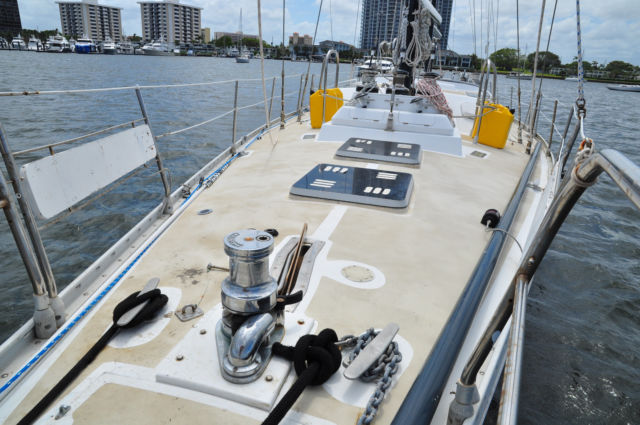
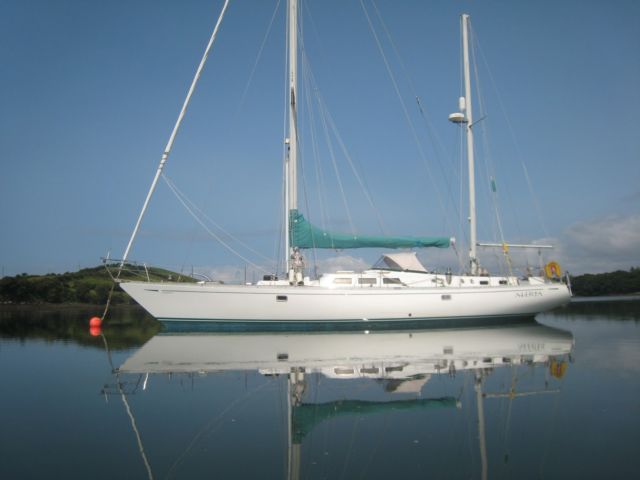
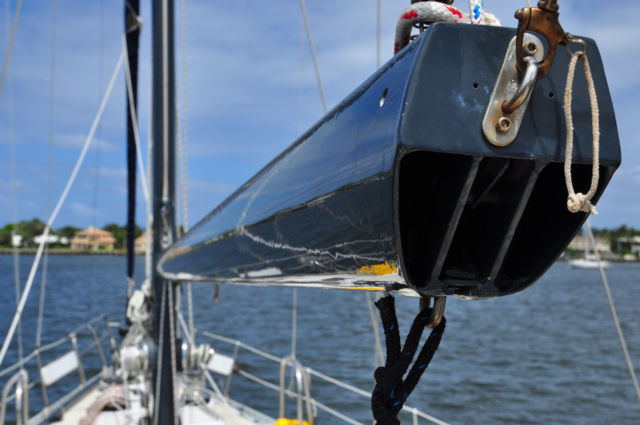
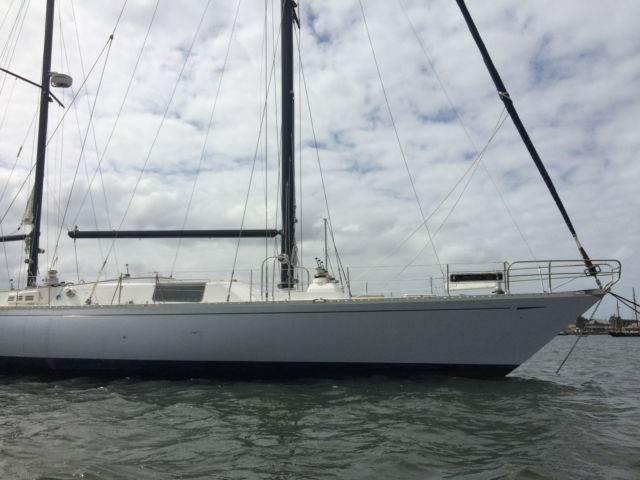
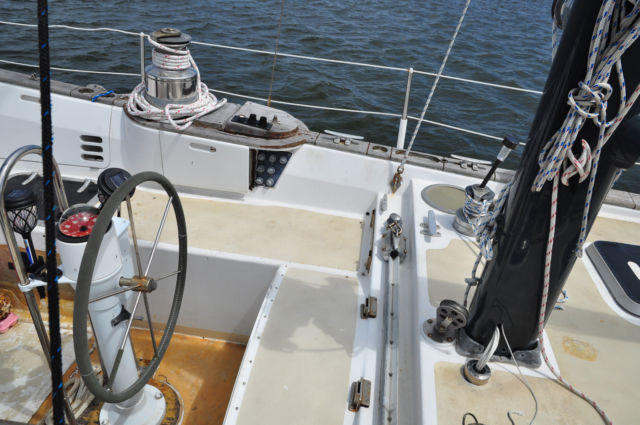
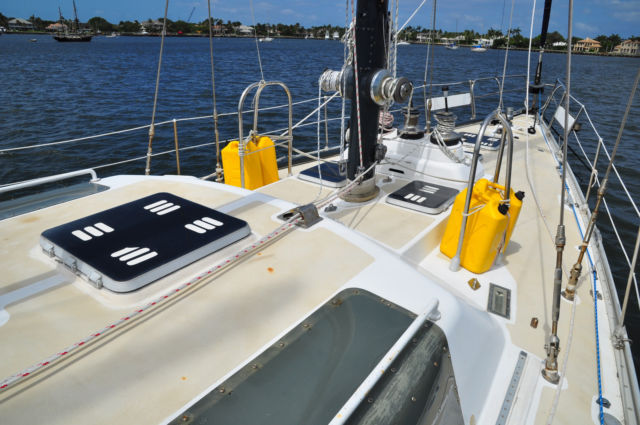
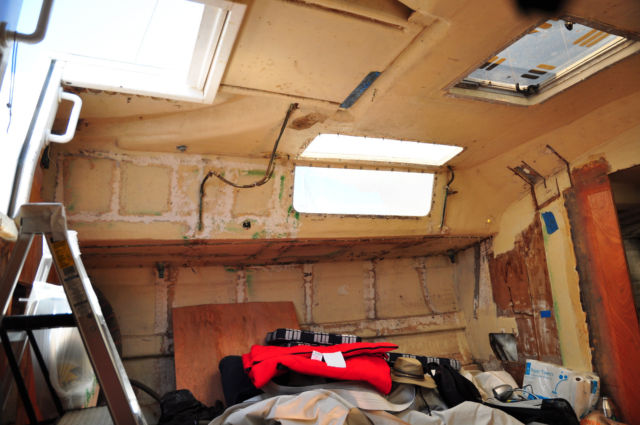
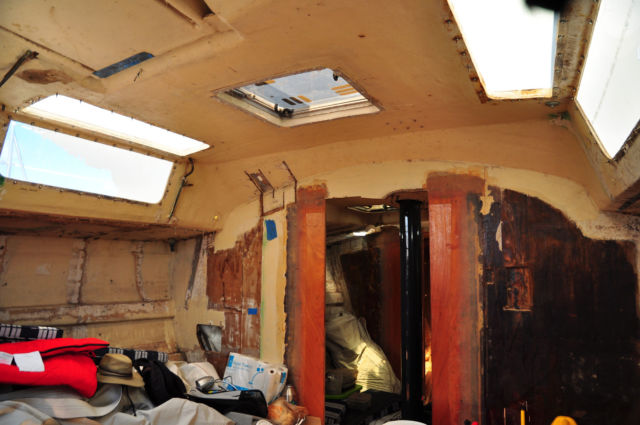
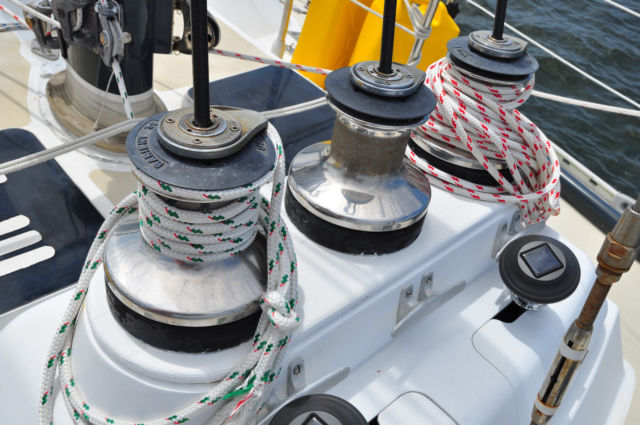
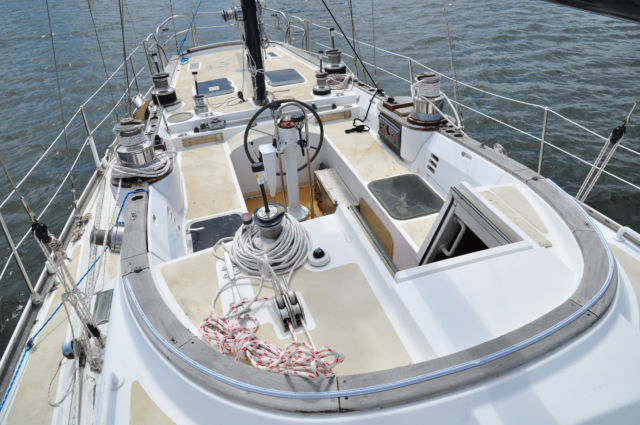
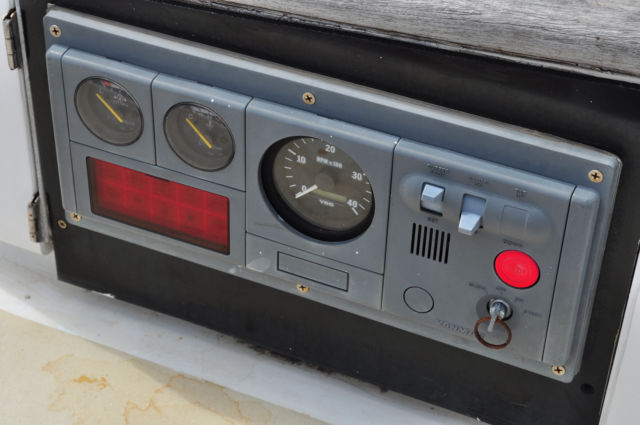
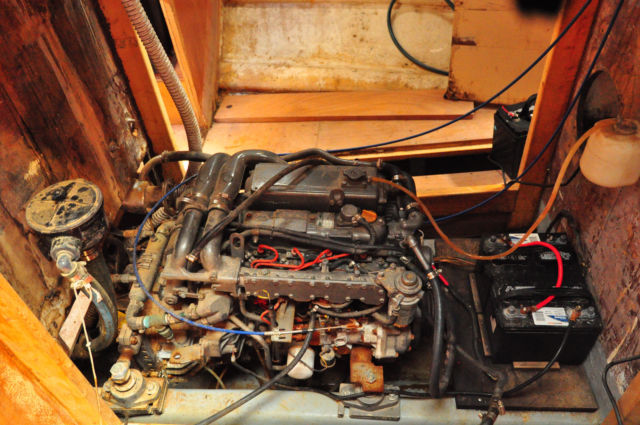
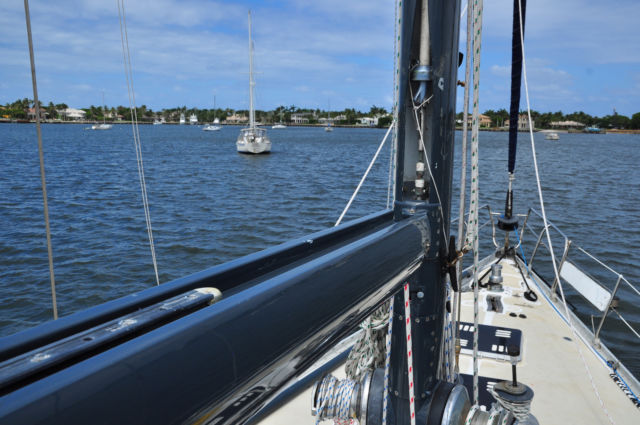
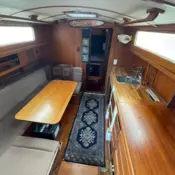 NoRsrv GORGEOUS/TOUGH GLOBAL CRUISER 2 SAVE YOUR LIFE-MAY SAVE OTHERS LIVES ALSO
NoRsrv GORGEOUS/TOUGH GLOBAL CRUISER 2 SAVE YOUR LIFE-MAY SAVE OTHERS LIVES ALSO
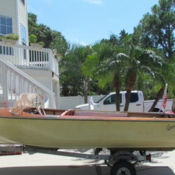 1956 Bowman Sarasota - Antique Boat
1956 Bowman Sarasota - Antique Boat
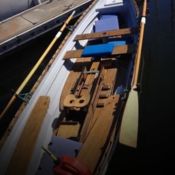 2005 Whitehall 17 Expedition Used
2005 Whitehall 17 Expedition Used
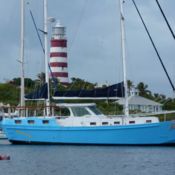 50' ALUMINUM EXPEDITION PILOTHOUSE SAILBOAT
50' ALUMINUM EXPEDITION PILOTHOUSE SAILBOAT
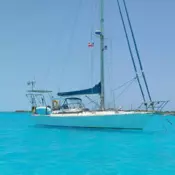 Dnieper Tropic 1200 – rugged, liveaboard expedition boat - like Ovni or Garcia
Dnieper Tropic 1200 – rugged, liveaboard expedition boat - like Ovni or Garcia
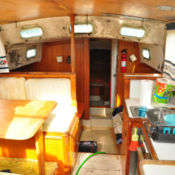 PERFECT VESSEL FOR COUPLE TO CIRCUMNATIGATE -GLOBALLY CAPABLE PILOTHOUSE CRUISER
PERFECT VESSEL FOR COUPLE TO CIRCUMNATIGATE -GLOBALLY CAPABLE PILOTHOUSE CRUISER
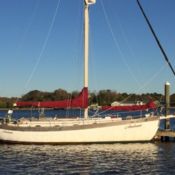 1979 Hans Christian 38T Cutter. Blue Water Capable, low hr Yanmar Diesel,
1979 Hans Christian 38T Cutter. Blue Water Capable, low hr Yanmar Diesel,
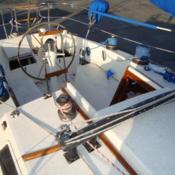 No Reserve FAST CAPABLE PACIFIC OCEAN CRUISER- SPACIOUS INTERIOR -Wheel Steering
No Reserve FAST CAPABLE PACIFIC OCEAN CRUISER- SPACIOUS INTERIOR -Wheel Steering
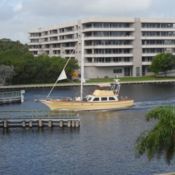 JOHN ALDEN MOTOR SAILOR Perfect Live aboard/ capable of long range cruising
JOHN ALDEN MOTOR SAILOR Perfect Live aboard/ capable of long range cruising
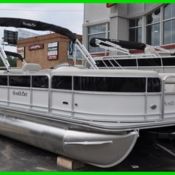 2016 South Bay 222RS~~~NEW CLEARANCE~~~Save HUGE~~~
2016 South Bay 222RS~~~NEW CLEARANCE~~~Save HUGE~~~